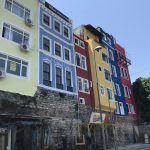“Lighthouse”
Old name: Petrion
Festivals: 6 January (Tossing of the Cross for Epiphany), Easter (midnight ceremony on Sunday)
Cramped and congested it may be but Fener is a fascinating suburb on the Golden Horn, once home to the Phanariote Greeks, descendants of the Byzantines who stayed on after the Ottoman Conquest and often rose to high office both in İstanbul and in the Balkan provinces. Of their once grand brick mansions only a handful survive — one now houses the city’s Women’s Library, another a glass workshop.
The coast road was built on reclaimed land but on the inland side of it you can still see battered stretches of the ancient Sea Walls that, with the great Theodosian Land Walls, once guarded the city so carefully. In some places houses have been built directly onto the walls.
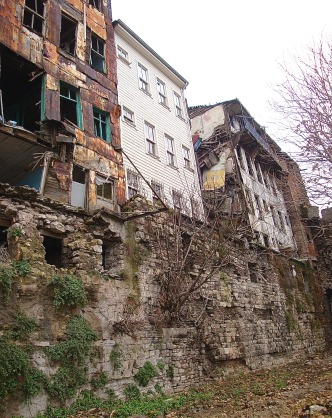
Despite the fact that it was once a wealthy part of the city Fener fell on hard times in the 20th century and is only just recovering. Today it’s filled with families who’ve moved here from elsewhere in the country.
Fener is home to the Patriarchate, a walled enclosure inside which sits the mother church of Greek Orthodoxy. The Patriarchate is at its busiest during Orthodox Easter when latecomers won’t even be able to get into the courtyard.
On 6 January (Epiphany), the date on which Orthodox Christians believe that Jesus was baptised, swimmers retrieve crosses thrown into water during an ancient ceremony that takes place not only in Fener but also in other locations around the world (and, since 2024, around other parts of İstanbul too). People come from Greece especially to take part in or witness the ritual although it has become increasingly touristy post-Covid.
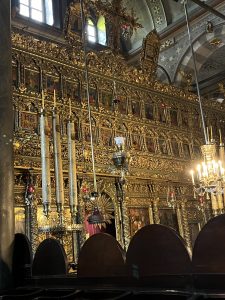
Around Fener
Fener is mainly a place for gentle mooching with many minor treats to distract you rather than any one blockbuster attraction. The exception is the Greek Patriarchate which is a major drawcard for Orthodox Christians, especially visitors from Greece. Today the centrepiece of the walled enclosure is a church that only dates back to 1720. Most of the ancillary buildings were destroyed by a fire in 1941, their places now taken by unexceptional modern buildings. However, if you walk into the garden behind the church you will find the original library still standing intact.
Inside, the church with its glistening gold panels is wonderfully atmospheric. It is also home to several specific treasures including a rare 12th-century mosaic icon of St John the Baptist built into the iconostasis; a second mosaic icon of the Panagia Pammakaristos (the Most Happy Mother of God); three caskets containing the remains of the early Byzantine saints, Euphemia, Omonia and Theophano; and a bishop’s throne which may have been designed for one of the city’s first patriarchs, St John Chyrsostom (347-407).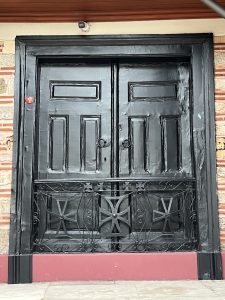
On your way in or out of the compound pause to look at the middle of the three gates which is painted black and kept permanently sealed in memory of Patriarch Gregory V, hanged in front of it when the Greeks rose up in rebellion against the Ottomans in 1821. You must pass through security to enter the courtyard.
Just up the road in the Cibali direction stands the grand pillared and pedimented Maraşlı Rum Okulu (Greek School), established by Gregorios Maraşlı in 1901 and restored in the 2020s. An older name for Fener, Petrion (Stone Place), probably commemorates a castle rather like Yedikule that once stood on the coast near the site of this school.
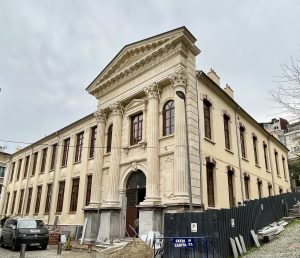
Midway between Fener and Balat stands a real curiosity — the Gothic-style Church of St. Stephen of the Bulgars which was made out of cast iron in Vienna in 1871, then shipped down the Danube and reassembled right on the shore to serve as the Exarchate of the Bulgarian Orthodox Church after it broke away from the Greek Patriarchate in 1870. It was restored in the 2020s since when no signs of rust remain.
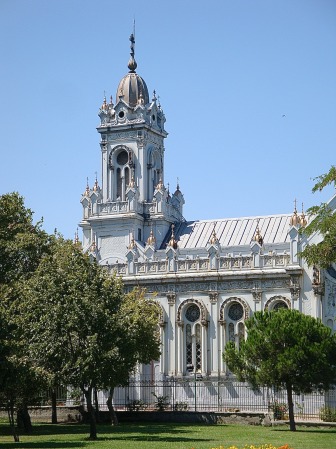
The skyline above Fener is dominated by an enormous redbrick building, nicknamed “the Red Castle”, that is frequently mistaken for the Patriarchate but is, in fact, the Fener Greek High School for Boys built in 1881 on the site of a succession of educational buildings dating back to the very first years of the Ottoman occupation. Now co-ed, the school has only a few pupils now it’s still private property and it’s unlikely that you will allowed to enter.
Very close to it is the Church of St Mary of the Mongols, the only Byzantine church in Constantinople that was not converted into a mosque after the Conquest in 1453. It’s rather a clumpy church given a thick coat of maroon paint during restoration and internally its layout is confusing.
Out on a limb in Murat Molla Sokağı is the Church of Hagios Georgios Poteras which dates back to 1830 and stands in a garden protected by a high wall. So prominent is the colour blue in its decor that it is sometimes known affectionately as the “Blue Church”.
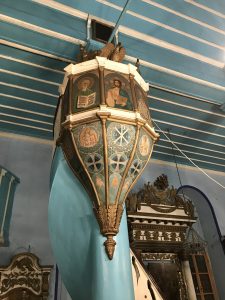 Eating
Eating
The coast road from Cibali to Balat has long been known for a string of restaurants serving işkembe çorbası (tripe soup), a popular hangover remedy. One such place is the Tarihi Haliç İşkembecisi (Tel: 0212-534 9414) which doubles as an unofficial memorial to Atatürk with hundreds of pictures of Turkey’s first president on the walls.
Sleeping
Troya Hotel. Boutique hotel created out of a row of terraced houses carefully restored by architects. Tel: 0212-531 4858
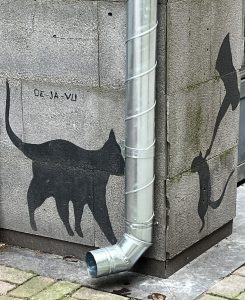 Transport info
Transport info
The Golden Horn ferry from Üsküdar via Karaköy stops in Fener once every hour, as does a ferry from Kadıköy. It’s by far the nicest way to reach the suburb.
The Golden Horn tram runs from Eminönü to Fener, bypassing the traffic jams.
Frequent buses from both Eminönü and Taksim also run along the coast road, passing through Fener, but during rush hours in particular they make slow progress on the narrow road which is not much better for pedestrians.
Nearby areas
Read more about Epiphany in Fener: http://turkeyfromtheinside.com/blogbloggingaboutturkey/entry/85-tossing-the-cross-epiphany-in-fener%2C-istanbul.html
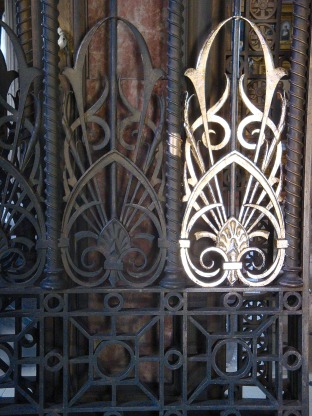 Detail of interior of St Stephen of the Bulgars
Detail of interior of St Stephen of the Bulgars


